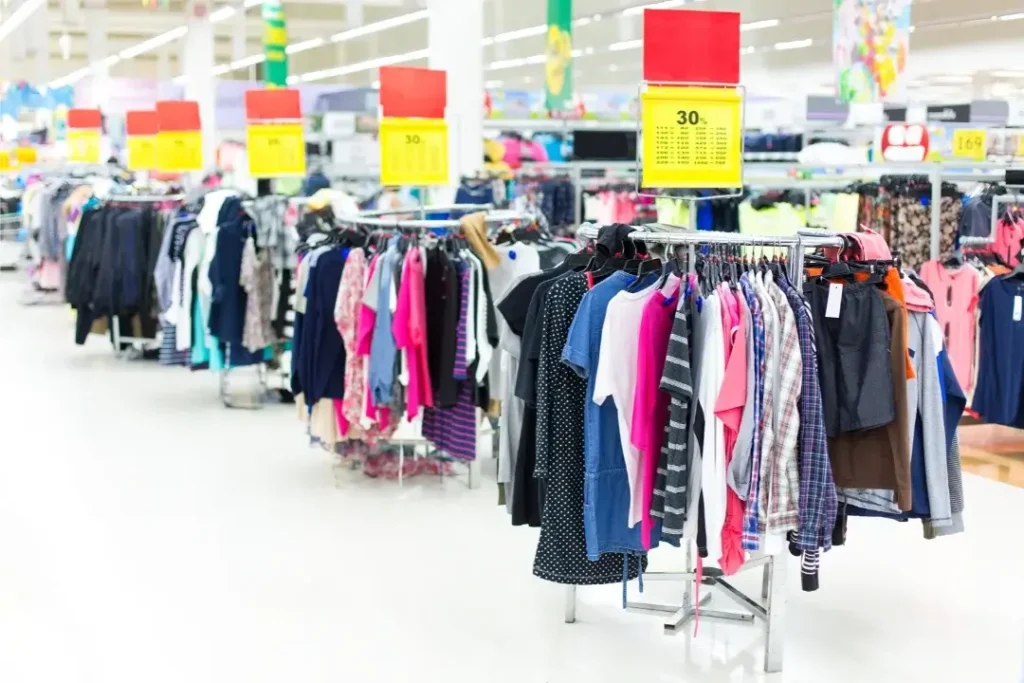
Why Clothing Brands Fail
Top Different Types of Shirts for Women and Men Top Different Types of Shirts for
Pakistan’s clothing market as the world’s top 6 clothing exporter has been experiencing rapid growth in recent years and the main cause seems to be the changing consumer behavior and a thriving textile industry. But what exactly makes it get constant growth and how far is it expected to go? To answer these questions, I have to remind you: “ Pakistan has a very strategic location for trading, a favorable business environment, and a skilled workforce. Thus making it an attractive destination for foreign investors and clothing brands. In this blog, we will explore the trends, size, and growth prospects of Pakistan’s clothing market, and examine the opportunities and challenges that lie ahead.
Pakistan’s clothing market is a significant contributor to the country’s economy, accounting for around 8% of GDP and employing millions of people. The market is dominated by the textile industry, which is the largest sector in Pakistan’s economy. The textile industry is responsible for producing a wide range of clothing products, including cotton fabrics, synthetic fibers, and value-added products such as high quality clothing manufacturers, knitwear, and hosiery.

The textile industry is the backbone of Pakistan’s economy, providing employment to millions of people and generating significant revenue for the country. The industry is also a major contributor to Pakistan’s exports, accounting for around 60% of total exports. The textile industry’s growth has a direct impact on the country’s economy, and its performance is closely watched by policymakers and investors.
Pakistan’s clothing market offers immense growth prospects for foreign investors and clothing brands, driven by changing consumer behavior and a thriving textile industry. The market’s growth is expected to be driven by increasing demand for fast fashion and e-commerce, as well as a growing middle class with rising disposable incomes.
Pakistan’s clothing market size was estimated to be around USD 12.8 billion in 2020, and it’s still continuously growing at a rate of 10.5% per annum. So we can conclude the market is expected to continue growing at a rapid pace, the fact it is driven by increasing demand for fast fashion and e-commerce. Keep in mind that the growth rate is expected to accelerate in the coming years, reaching 14.7% by 2025.
The market can be segmented into three main categories such as men’s wear, women’s wear, and children’s wear. Men’s wear is the largest segment, accounting for around 40% of the market, followed by women’s wear and children’s wear. On the other hand, the market can also be segmented by occasion, with formal wear accounting for around 30% of the market and casual wear accounting for around 70%. When we talk about distribution channels, the market is dominated by offline channels mostly, while online channels only account for around 10% of the market.
The growth prospects of the market are driven by increasing demand for fast fashion and e-commerce. The rise of e-commerce has made it easier for consumers to purchase clothing products online, and the demand for fast fashion is increasing rapidly. The market is also expected to benefit from a growing middle class with rising disposable incomes, as well as a favorable business environment and skilled workforce.
|
Year
|
Market Size (USD billion)
|
Growth Rate (%)
|
|---|---|---|
|
2020
|
12.8
|
10.5
|
|
2021
|
14.2
|
11.1
|
|
2022
|
16.1
|
12.3
|
|
2023
|
18.3
|
13.5
|
|
2025
|
20.6
|
14.7
|
Source| Euromonitor International
According to the latest data, Pakistani consumers are becoming increasingly fashion-conscious, with a growing demand for fast fashion and e-commerce on the go. We also need to note that these consumers are also becoming more aware of the importance of sustainability and custom eco-friendliness, with a growing demand for sustainable and eco-friendly clothing products.
The factors influencing purchasing decisions in Pakistan’s clothing market include price, quality, brand reputation, and social media influence. The fact is most consumers are becoming increasingly price-sensitive, with a growing demand for affordable clothing products. Quality is also an important factor they always prefer, with consumers looking for high-quality products that meet their expectations. Brand reputation is also important, with consumers preferring to purchase products from well-known brands. Social media influence is also playing a significant role, with consumers increasingly influenced by social media platforms and celebrity endorsements.
There is a growing demand for sustainable and eco-friendly clothing products in Pakistan’s clothing market. Consumers are becoming increasingly aware of the importance of sustainability and eco-friendliness, and are looking for products that meet these criteria. The demand for sustainable and eco-friendly clothing products is expected to continue growing in the coming years, driven by increasing awareness and concern for the environment.
When it comes to making purchasing decisions, Pakistani consumers have a few key factors in mind. According to a survey by Nielsen Pakistan, the top factors influencing purchasing decisions are :
|
Factor
|
Percentage of Respondents
|
|---|---|
|
Price
|
70%
|
|
Quality
|
60%
|
|
Brand reputation
|
50%
|
|
Social media influence
|
40%
|
|
Sustainability
|
30%
|
As you can see, price is the top consideration for Pakistani consumers, with 70% of respondents citing it as a key factor in their purchasing decisions. Quality is also important, with 60% of respondents saying it plays a role in their decision-making process. Brand reputation, social media influence, and sustainability are also important, but to a lesser extent.
Pakistan’s textile industry is a significant contributor to the country’s economy, and it’s an important sector to understand for anyone looking to invest in the clothing market. Here are a few key facts about the industry:
Here’s a summary of the key statistics about Pakistan’s textile industry:
|
Indicator
|
Value
|
|---|---|
|
Production capacity (million tons)
|
14.5
|
|
Exports (USD billion)
|
13.2
|
|
Employment (million people)
|
4.5
|
|
Government support (PKR billion)
|
100
|
Pakistan’s clothing market offers a number of opportunities for foreign investors, from fast fashion to e-commerce and sustainable clothing. Here are a few key areas to consider:
Here’s a summary of the key statistics about market opportunities for foreign investors in Pakistan’s clothing market:
|
Segment
|
Market Size (USD billion)
|
Growth Rate (%)
|
|---|---|---|
|
Fast fashion
|
3.5
|
15%
|
|
E-commerce
|
2.2
|
20%
|
|
Sustainable clothing
|
1.5
|
25%
|
While Pakistan’s clothing market offers a number of opportunities for foreign investors, there are also some challenges to be aware of. These include:
Despite these challenges, the future outlook for Pakistan’s clothing market is positive, driven by increasing demand for fast fashion and e-commerce. The market is expected to continue growing in the coming years, with opportunities for foreign investors to get involved in areas like sustainable clothing and e-commerce.
While Pakistan’s clothing market offers a number of opportunities for foreign investors, there are also some challenges to be aware of. According to a survey by the Pakistan Apparel Forum, the top challenges faced by the market are:
|
Challenge
|
Percentage of Respondents
|
|---|---|
|
Competition from neighboring countries
|
60%
|
|
Energy shortages
|
50%
|
|
High labor costs
|
40%
|
|
Limited access to finance
|
30%
|
As you can see, competition from neighboring countries is the top challenge faced by Pakistan’s clothing market, with 60% of respondents citing it as a major issue. Energy shortages, high labor costs, and limited access to finance are also significant challenges that need to be addressed.
In conclusion, Pakistan’s clothing market is a growing and dynamic industry that offers a number of opportunities for foreign investors. The market is driven by increasing demand for fast fashion and e-commerce and is expected to continue growing in the coming years. While there are some challenges to be aware of, such as competition from neighboring countries and energy shortages, the future outlook for the market is positive. To recap, Pakistan’s clothing market is a significant contributor to the country’s economy, with a market size of around USD 12.8 billion and a growth rate of 10.5%. The market is driven by increasing demand for fast fashion and e-commerce and is expected to continue growing in the coming years.
The current size of Pakistan’s clothing market is around USD 12.8 billion.
The growth prospects of Pakistan’s clothing market are positive, driven by increasing demand for fast fashion and e-commerce. The market is expected to continue growing in the coming years, with opportunities for foreign investors to get involved in areas like sustainable clothing and e-commerce.
The factors influencing purchasing decisions in Pakistan’s clothing market include price, quality, brand reputation, social media influence, and sustainability.
The market opportunities for foreign investors in Pakistan’s clothing market include fast fashion, e-commerce, and sustainable clothing.
The challenges faced by Pakistan’s clothing market include competition from neighboring countries, energy shortages, high labor costs, and limited access to finance.
Expert Custom Clothing Manufcaturer

Top Different Types of Shirts for Women and Men Top Different Types of Shirts for

What You Must Know About Clothing Samples? Before You Produce a Single Garment: What You

How Much Does It Cost To Make a Hoodie A Complete Cost Breakdown for Custom

Discover the Types of Buttons Discover the Types of Buttons That Transform Style and Functionality
Most Recent Posts
Expert Custom Clothing Manufcaturer
Join our Mailing list!
Get all latest news, exclusive deals and updates.